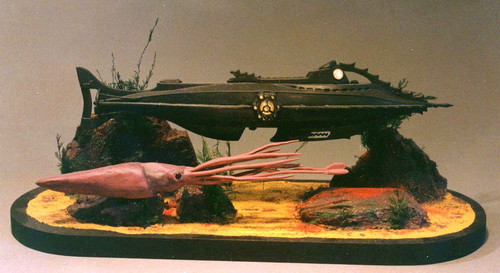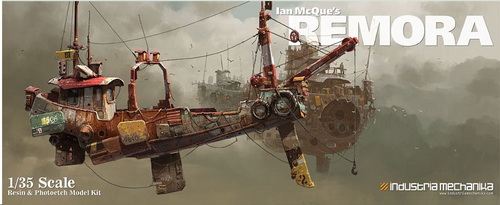

So what exactly is 'Steampunk'? ... not easy to explain, and not helped as, for a start, is it written Steampunk, Steam-punk, or Steam Punk, and is it upper or lower case? So even the precise way of writing the term doesn't really appear to have been decided upon... (We'll stick to the former here...) |
|
As with many of these terms, it is difficult to pinpoint its precise introduction. However it seems to have been 'invented' as a spin-off from Cyberpunk, itself generally accepted to have been coined by William Gibson in his 1984 debut novel 'Neuromancer'. Cyberpunk generally refers to dystopian futures, possibly the best known example being Ridley Scott's movie 'Blade Runner', (based on Philip K. Dick's novel, 'Do Androids Dream of Electric Sheep?') though arguable would also include many other novels and movies, such as 'The Matrix' trilogy, 'Johnny Mnemonic', 'A Clockwork Orange', 'Ghost in the Shell' and as far back as Fritz Lang's 'Metropolis'. |
|
| Steampunk - although a newer term - ironically harks back to earlier times. Very generally - and the clue is in the name - it is, very loosely, Victorian 'steam-based' engineering taken to an extreme. It is the sort of thing that is typified by H.G.Wells and Jules Verne stories, possibly with a touch of Art-Deco, but then much more besides... Maybe it involves alternative universes or time-streams and boils down to science fiction moving to science fantasy. Modern authors such as Philip Pullman uses many 'Steampunk' aspects with the 'His Dark Materials' trilogy, especially with the use of balloons and airships. You could also argue that many elements of Wallace and Gromit, and the whole of Terry Pratchett's 'Discworld' saga, are Steampunk based. Then many elements of the Batman movies, the Gotham TV series and especially with The Tumbler. It has also been spun-off with Wild West themes - notably the TV series and movie, The Wild, Wild West. Steampunk elements also find their way to otherwise non-Steampunk series. For example you could possibly include the Borg from Star Trek and the Cybermen from Doctor Who. Then there is the latter's brass and wood Tardis Edwardian alternative control room, featured in one season. (And forms the background to this page.) | |
 |
 |
So it is not that easy to give a definite explanation - except you tend to know it when you see it! Yes props and models invariably involve a lot of brass and wood, gears and piping, while for cosplay, costumes usually include leather, goggles, hats and waistcoats, (or 'vests' for our US readers!). As far as model making is concerned - which is prime purpose of MEDIA MODELLING - is there anything existing that falls under Steampunk? |
|
Well the Industria Mechanika kits certainly do, as they are primarily made with Steampunk in mind. Also many of the Japanese anime series also use Steampunk designs, particularly Gonzo Studio's 'Last Exile', as kitted by Hasegawa. Railways often come into the Steampunk universe - and here it is of course it is the steam variety that rules. So much so that Hornby, using the original Bassett Lowke name, has introduced a new range of Steampunk rolling stock and buildings. Then Wave made Captain Nemo's car and Nautilus sub, from 'The League of Extraordinary Gentlemen'
Images - from the very top : Masudaya - Maria from 'Metropolis' Comet Miniatures - Nautilus from '20,000 Leagues Under the Sea' Tardis Edwardian Consol from 'Doctor Who' Industria Mechanika - Remora Hasegawa - VanShip from 'Last Exile' Hornby - Bassett Lowke Steampunk railways Wave - Nemo's car from 'The League of Extraordinary Gentlemen' |
 |
 |
|
But of course you can always make up your own! The more original the better... Bring it on for MEDIA MODELLING 3! |
|
BACK TO MAIN MEDIA MODELLING PAGE
